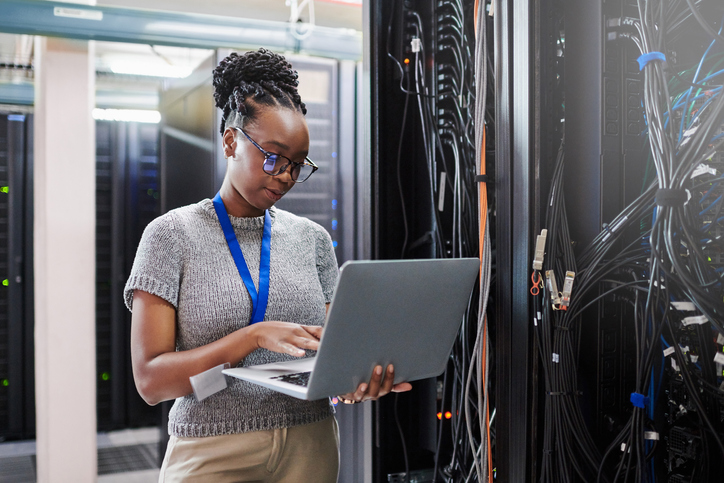Insights into Cybersecurity for 2022: What to Expect and How to Prevent Cyberattacks
Cyberthreats are growing in both scale and complexity, and the need to secure critical infrastructure by businesses and public organizations has never been as urgent as now. 2021 broke all records regarding data lost in breaches and the sheer numbers of cyberattacks on companies, governments, and individuals. Perhaps most worrisome was how critical infrastructure and supply chain security weaknesses were targeted and exploited by adversaries at higher rates than in the past. There were high-profile breaches such as Solar Winds, Colonial Pipeline, JBS, and dozens of others that had a major economic and security-related impact.
Across the board, cyber security experts say that the threat of cyberattacks isn’t going away, and they predict that the frequency, intensity, and sophistication of ransomware attacks will significantly increase in 2022 and beyond.

What Lessons Can Be Learned from the Biggest Cyberattacks in Recent History?
The biggest cyberattacks in recent history were supply chain attacks. In fact, software supply chain attacks grew by more than 300% in 2021 compared to 2020, according to a study by Argon Security. For sophisticated cybercriminals, the supplier ecosystem is an attractive vector to exploit, as an attack on one becomes an attack on many. The world still hasn’t fully recovered from the grave impact of devastating supply chain attacks like the SolarWinds hack, the Accellion breach, and the Kaseya attack. These mega-breaches have demonstrated how easily threat actors can compromise hundreds of organizations once they successfully breach a supply chain’s single link.
Considering this, third-party risk management should be one of the top priorities for organizations in the year ahead. Map out all vendors currently accessing your sensitive data and their respective access levels. Questionnaires will help flesh out how each vendor processes and protects your sensitive data. Service providers should only access the minimal amount of sensitive data they require to offer their services. You should also include cybersecurity requirements in vendor contracts and have a process for continually assessing and monitoring risk related to vendors and external partners.
What Will Cyberattacks Look Like in the Future?
Cyberattacks will continue to become more frequent, with more significant consequences as time goes on. The intelligence that goes into cyberattacks will also evolve and become more sophisticated and harder to detect, which means businesses will need to step their game up and improve their security posture if they hope to protect themselves from these types of threats moving into the future.
- Rise in IoT attacks: As our society continues to add more connected devices to our networks and the internet (cars, smart cities, offices, and homes), the attack surface exponentially grows. Despite connecting to networks and other devices that access highly sensitive information, IoT devices have relatively weak security controls. While attacks via the IoT are already evident, we will most likely see a rise in individual threats and the further sophistication of their delivery methods in the future. Identifying vulnerabilities in these IoT devices and updating security patches will only become more difficult as they become more ubiquitous.
- Increase in polymorphic cyberattacks: The continued growth and reliance on cloud resources will also lead to a sharp rise in multi-vector (polymorphic) attacks. Hackers will attempt to compromise networks on multiple fronts to gain access to sensitive information or to bring networks down altogether.
- More ransomware threats: Over the next few years, ransomware will continue to be the biggest threat and financial risk to enterprises. Threat actors will continue to go after low-hanging fruit – phishing emails and scams will continue to be the most effective way to open up vulnerabilities and gain access to user credentials.
- Increase in state-backed cyberattacks: We have already seen cyberattacks originating from within foreign governments, such as the SolarWinds attack, which Russian hackers carried out. Threat actors will most likely continue to have a safe haven in states like Russia, North Korea, Iran, and China. Factors like rising geopolitical tensions, instability due to the pandemic, and increased access to cryptocurrencies will considerably contribute to the growing number of politically-motivated attacks on nearly every industry.
How Can Organizations Protect Themselves from Cyberattacks?
Businesses looking to get ahead of cyberattacks and provide themselves with proper protection should implement multiple layers of security as the baseline. There are many steps that companies can take to improve their overall security posture. The more layers that are implemented, the fewer chances of a threat digging deep enough to penetrate critical infrastructures. Here are the top three:
- Implement zero-trust policies: Zero trust applies the principle of fundamentally not trusting anything on or off your network and deploys an “assume-breach” mindset. Only after each connection request passes a strict list of policies is it permitted to access your systems. Consider adding multi-factor authentication as a means of protecting trusted users’ accounts.
- Provide ongoing employee cybersecurity awareness training: Your employees are your first line of defense. All it takes is one employee falling for a phishing attack or clicking on a bad link and getting ransomware for your entire company to be put at risk. Everyone in the organization, including management, needs to have at least basic cybersecurity awareness training to help them identify and report breach attempts rather than falling victim to them. Your cybersecurity awareness training program should cover email security, internet security training, information sharing procedures, and basic anti-social engineering training. Since cybersecurity is an ongoing problem, you will need to provide frequent refreshers and testing to ensure your team is prepared against new attacks.
- Develop a data backup and recovery plan: A data backup and recovery plan is your best chance at defending your organization from suffering the effects of a data breach. If you don’t have data backup and recovery strategies in place, a cyberattack can result in a catastrophic data breach and disrupt business continuity. Create an inventory of your data to determine how it should be categorized and where it’s stored, then develop a ransomware data recovery plan for all assets and data, prioritizing mission-critical ones. It’s important to encrypt and isolate the backup network and remove any system-level access to it, creating an “air gap” between the two systems. Doing this will successfully prevent hackers who manage to access production data from reaching the backup files. You need to regularly test your backups because, without testing, you can’t be certain the plan will work and that your backups are functional.
OnPar Technologies Can Protect Your Organization from Cyberattacks
It’s undeniable that cyberattacks aren’t slowing down, and as such, organizations need to take steps to stay ahead of cybercriminals and enhance cyber resilience not only within their organizations but also within the wider supply-chain ecosystem. At OnPar Technologies, we provide comprehensive cybersecurity services to businesses in North Carolina. You can count on us for network security, identity and access management, dark web protection, and backup and disaster recovery services. Contact us today to speak with our cybersecurity experts.
Thanks to our colleagues at Velocity IT in Dallas for their help with this article.


